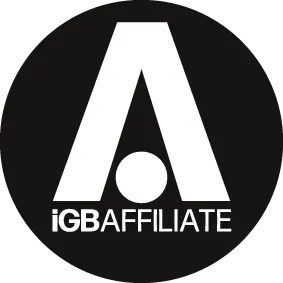

XL Media’s Head of Content & PR Hayley Stansfield and Head of SEO Graham Pinkney provide their top tips on how to create a healthy and low-risk link profile in the competitive US search landscape
In the US alone, it is estimated there are approximately 12,000 affiliate programmes, a large number of which are involved in the igaming sector. This means that for many US gaming affiliates, digital marketing is at the top of the agenda, as it’s the sole revenue generator for them. However, despite the growth opportunities on offer, variations in state-to-state regulations can make it hard for affiliates operating in multiple countries to create a streamlined digital marketing plan that is both in line with regulations and safe for multiple geographies.

In addition to this, some US affiliates still use something we call ‘black hat’ tactics, especially when it comes to SEO. This often takes the form of paid links via guest posting opportunities with editorial websites and paying for link placements in various different media sectors. Although some brands may experience a short-term uplift in online visibility from these tactics, this is not a reliable strategy as it can often lead to a dramatic dip in traffic and, of course, a dreaded Google penalty. So how do we go about fixing this? The most important factor is to build a robust SEO strategy supported by a healthy link-building profile. This should be conducted organically to avoid getting penalised for spammy activity.
Analyse your current performance
A good first step is to get a solid understanding of where your brand currently stands when it comes to performing against competitors. Monitoring traffic and ranking trends is probably a good place to start, as this will allow you to see if there are any sudden dips in traffic, which could be correlated to a sudden increase in backlinks. This is a clear indication that the site has been impacted negatively due to unnatural backlinks being built to the site.
Next, check to see if there are any major changes to the site’s traffic and rankings since the last Google link spam update that took place in June 2021. For example, the graph below shows that this website was directly impacted by the updates, with a sudden decrease in ranking traffic after the update hit.

If you do this analysis and notice that the website has been negatively impacted by the update, the next step is to understand exactly why this has happened. This is where you want to get to grips with what a ‘good’ and a ‘bad’ link is.
Review your backlink profile
There are a number of tools that allow you to understand just how good – or should we say ‘healthy’ – your backlink profile is. To get a good understanding of this, we recommend the likes of Ahrefs and Semrush, both of which provide a ‘toxicity’ score of the backlinks that currently point to your site. The toxicity score is based on the number of dangerous links that point to your site, all of which are ranked on a scale of 0 to 100, with 0 being good and 100 being very toxic.

There are multiple different toxic markers that Semrush uses in determining how toxic these links are, including if the links appear to have been paid for, are spammy, or appear to be irrelevant to your product offering and target audience. You can also use these tools as an active place to monitor the healthy score of your backlinks and how it is improving over time. Most tools similar to Ahrefs and Semrush will also provide a view of the percentage split of how many ‘followed’ and ‘no follow’ links point to your site. Followed links often need to be a priority as part of a link-building strategy as they do pass more authority to your site, and if a site has a good backlink profile, it’s likely that the percentage of followed links will be higher. However, if a website has an extremely high volume of ‘do follow’ links (above 90%, say) this could be due to paid-for link-building activity in which a high volume of followed links have been purchased.
Identifying Spammy Links
There are many ways to determine if a link is a spam link or not. One good indicator is that the website the link has come from has an extremely low domain authority score. This is a third-party metric that analyses the number of quality backlinks pointing to that site, the quality of the content that is hosted there, and the probability that the website is likely to rank higher in the SERPS. A solid website, one with good content and a decent backlink profile, should have a domain authority score of 50 and above. If a domain has an authority score of 20 or lower, it is likely that a link from this website would not offer much value to you, and could be harmful. Another way is to look at the anchor text of the link. Anchor text is the visible, clickable text displayed when it is linked to another URL. Often spammy and toxic links can include text that is completely unrelated to your brand or any service you offer and can even appear in a foreign language. Sometimes, as well as text that is irrelevant, spammy links can also include something we call ‘exact-match’ anchor text. This is when multiple backlinks to your site have the same anchor text or have obviously been paid for, in which case the anchor text may be something too branded or specific. Exact-match anchor text is often a giveaway that a link has been paid for, as the buyer has requested that the text displayed is a target keyword – despite the content it links to having no relevance to that target keyword.

Other tips include identifying links that could be a part of a spam network, for example if you see hundreds of auto-generated subdomain Blogspot backlinks with autogenerated content and backlinks that discuss pornography, criminal or illegal activity.
More information on links that could violate Google’s paid link-building guidelines can be found here: https://developers.google.com/search/docs/advanced/guidelines/paid-links
Removing harmful domains
There are two main ways to get rid of harmful domains. You can do it manually by contacting the webmaster (or the editor of the content that has been published) and asking them to remove the link. Alternatively, you can use Google’s ‘disavow’ tool, which tells the search engine to ignore the harmful referring domains that are pointing to your website.
To do this in bulk and to ensure that all toxic links are removed from your link profile, collect all the spammy/harmful referring domains and follow the advice in this guide: https://support.google.com/webmasters/answer/2648487?hl=en
To be cautious and to allow you to measure the impact of disavowing links easily, it’s best to do this in small batches over a length of time. This process will then allow you to measure the site’s rankings and organic traffic trends over the next few weeks/months as you remove the harmful links.
The success of disavowing can be felt more immediately within the affiliate industry, a sector notorious for having more paid links in its landscape among the SERPS. However, if Google can see you're doing the ‘right’ thing, then you are much more likely to be rewarded.
The graph below demonstrated a success story of a financial affiliate which was hit by the link spam update in June 2021. Here we began disavow work on the site in late June 2022, this has continued throughout the year and you can see the impact this has had on ranking traffic.

Earning new, high-authority and healthy backlinks
The best way to rebuild your link profile is to take these learnings and apply them to your new digital PR strategy. Whether you’re working with an external agency or building links in-house, there are several factors to consider to ensure that the new links pointing back to your site will only have a positive impact.
At this stage, it’s crucial to stay well away from any completely harmful backlink strategies such as link schemes and sponsored links.

Having a good understanding of your competitors’ landscapes and the backlink profiles they have will also come in useful. Learn which competitors outperform you when it comes to the quality of their backlinks and learn what kind of content earns them these organic links.
To see which high-quality links your competitors have but you lack, produce a link gap analysis and target the most valuable referring domains (based on Ahrefs domain rating) and relevancy. Analysing the content of these websites and the news stories they have published will also be crucial when it comes to forming PR concepts. Think about the style in which the journalists write, the most common topics they’re covering and the content form – e.g. reactive, always-on PR, influencer campaigns, survey-led studies or research-based reports, etc.
For more information on using digital PR and content marketing to maximise the reach of your services, please contact Lizzie Lewington, growth director of Blueclaw Media/ XLMedia PLC lizzie.lewington@xlmedia.com

Hayley Stansfield
is Head of Content & PR at Blueclaw Media/XLMedia Plc. Hayley has over 9 years’ experience in digital PR and specialises in creating new content marketing strategies to earn B2B and B2C brands high-authority media placements. This includes working closely with technical teams, such as SEO and data, to ensure clients are securing mentions and backlinks in relevant media that will show a positive uplift in performance. This is achieved by building and maintaining solid relationships with journalists and the press.
Photo by Fré Sonneveld on Unsplash
